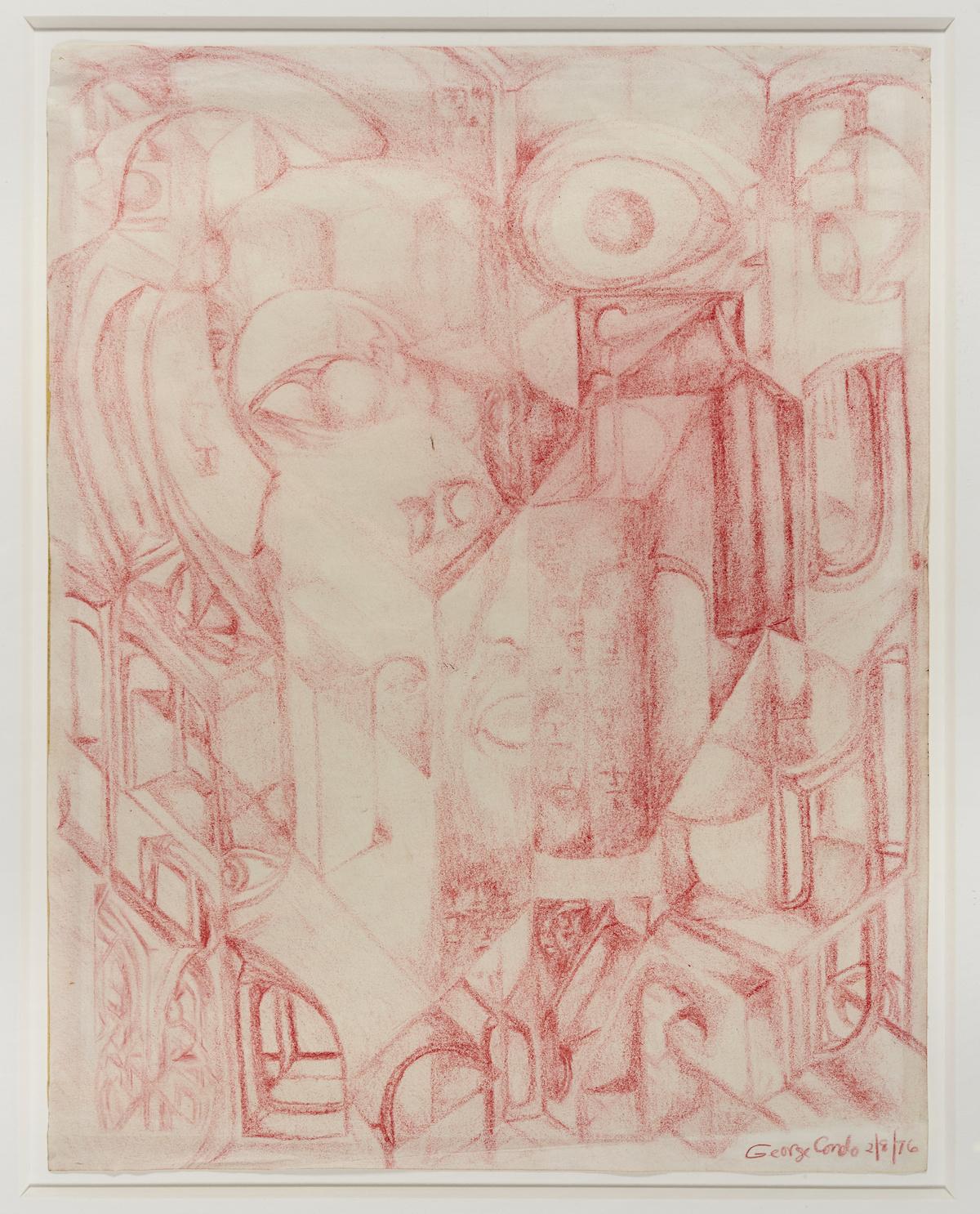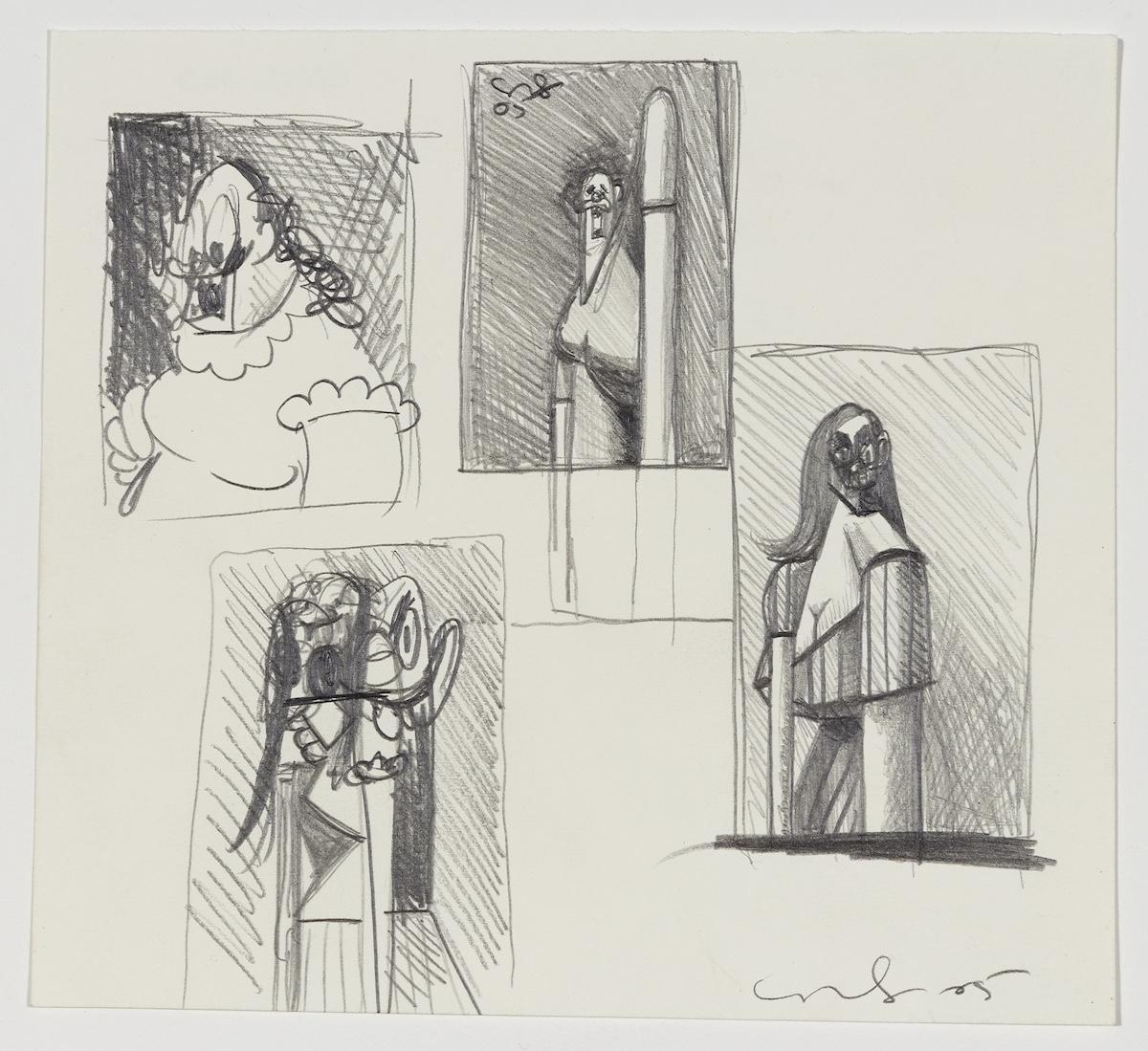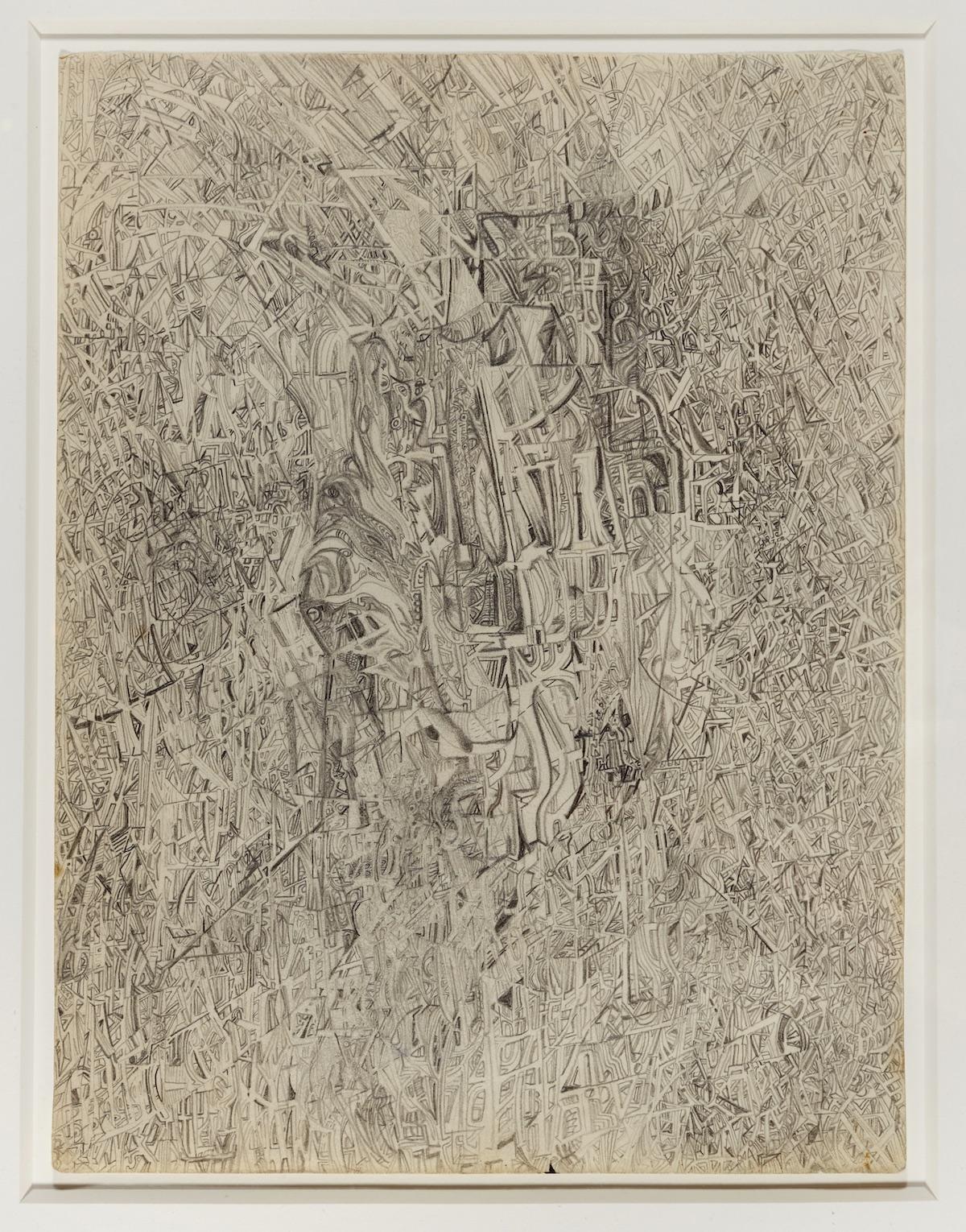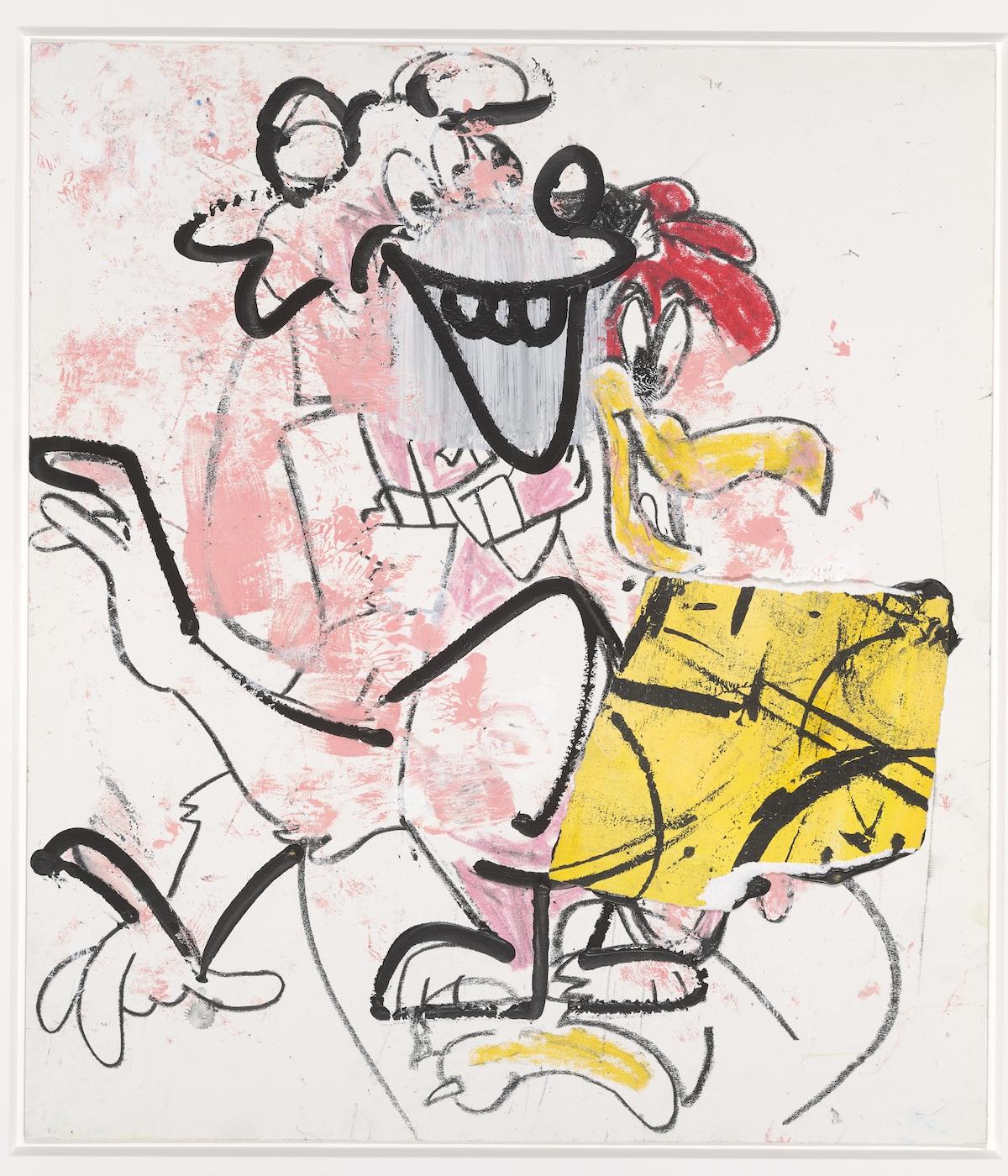These developments reverberated throughout the ’80s art world, as profits from a stock market boom ignited by tax cuts, union-busting, and deregulation flooded the art market. Since the reductive aesthetics of the late 1960s and early ’70s weren’t conducive to producing artworks that could be transformed into fungible commodities, a reaction to Conceptual Art and Minimalism was needed; it came courtesy of a new wave of young, Baby Boomer artists who reembraced the figurative tradition, Condo among them.
This conservative drift in politics and culture had grown out of the inflationary spiral of the 1970s, which was partially blamed on programs aimed at promoting a more equitable society. It’s somewhat ironic, then, that this counterrevolutionary charge was led by a postwar generation emerging from an expanded middle class made possible by policies like the G.I. Bill. Families could afford homes in the suburbs, cars, and appliances—including TVs spraying images into households like a firehose. Assisted by comic books and film, television created the first media environment that directly shaped childhood. For the artists who’d grown up in this milieu, reconnecting art to representationalism was a no-brainer.

































